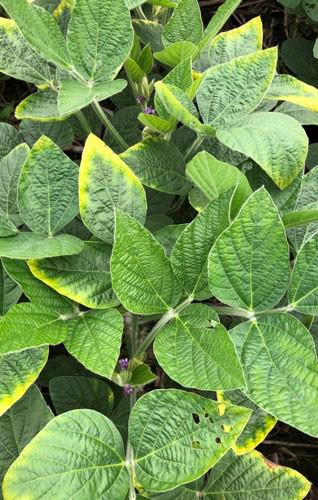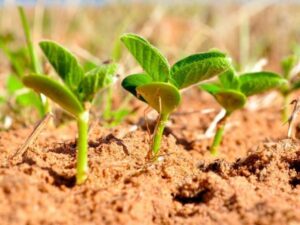Precision agriculture currently rides a tide of technological improvisation, occasionally propelled by sudden shifts in sensing methodology. Lately, soybean producers have witnessed a swift decline in manual scouting efficiency—a curious irony—and an upsurge in computer vision approaches like YOLOv8s. Nutrient deficiencies remain a crucial aspect threatening soybean productivity, but their elusive nature often confounds early intervention; they rarely present classic manifestations until yield has already taken damage.
With the YOLOv8s paradigm entering the seedbed of crop analysis, prospects for early warning and spatial guidance are quietly revolutionized. The incentive to embrace remote sensing is partly due to how conventional plant nutrient assessments have trailed behind crops’ actual physiological changes. Laboratory soil analysis offers accuracy but lacks temporal frequency and field-scale responsiveness that dynamic fertilization schemes demand.
When applied to imagery collected via uncrewed aerial vehicles (UAVs) or handheld sensors shooting high-resolution snapshots low over green rows, YOLOv8s shines as a rapid filter—even if at times sensitivity misleads area-wide estimates by focusing on leaf texture rather than nutritional nuances. These models parse scenes using real-time object detection—identifying demarcated symptoms such as interveinal chlorosis or suppressed leaflet growth patterns indicative of nitrogen or potassium stress. On one hand, mean average precision (mAP) rates with YOLOv8s frequently exceed 98%, showing remarkable selectivity for subtle differences even amidst shading complications.
Standard practices can lag weeks behind actual deficiency onset because they’re bound by sampling logistics; interestingly enough though, integrating deep learning accelerates both diagnosis and decision cycles. It’s true that some would argue blob detection suffices for measuring plant stand density—the number of viable plants per hectare—but comparative trials come out strongly favouring YOLO-based systems for spatial consistency and automated narration of stress maps.
Crop breeders first caught on when using segmentation tools derived from YOLO’s backbone found unexpected utility in classifying embryonic radicle development during seedling emergence periods—but this cross-pollination of methodologies led almost naturally into deficiency mapping tasks where colorimetric cues diverged from canonical disease progression tracks. However, sometimes segmentation granularity overshoots what is agronomically actionable data; false positives peppered with benign leaf anomalies illustrate how increased algorithmic vigilance demands human review cycles.
YOLOv8-enabled workflows don’t just push image through neural nets hoping for binary judgments: the cascade involves feature extraction routines that tease out boundary conditions where deficiencies blur at plot borders versus undisturbed control zones—a process that slightly resembles edge-detection filters but with biological meaning embedded underneath pixel transitions. Certain upgrades within these models—SegNext_Attention modules incorporated after spinal nodes—extend classification reach while consuming more computational fuel than their ancestors did.
When the algorithm generates mask overlays highlighting affected tissues directly onto leaf images during predictions, practitioners find interpretability unexpectedly enhanced—though data output formats might still challenge legacy farm management software unwilling to ingest composite raster-vector layers seamlessly.
It strikes me as peculiar sometimes: despite statistical validation favoring these advanced detectors (for instance over 90% accuracy compared to traditional methods), some agronomists hesitate due to model opacity and occasional semantic drifts where environmental background features trick classifiers into flagging non-deficient foliage patches as suspect zones.
Yet it cannot be downplayed just how much real-world deployment influences input variable choices: multispectral sensors capturing NDVI gains detect gradients overlooked by naked visual inspection while shortwave-infrared readings single out drought-induced nutrient mobility lapses. Curiously enough though—as algorithms improve resolution—field margins previously dismissed as noise emerge carrying diagnostic weight not accounted for under old schema.
Unexpectedly perhaps, deep learning approaches drive more nuanced dialogue between extension professionals and growers—it no longer suffices simply saying “apply triple super phosphate here.” Instead recommendations hinge upon georeferenced symptom clusters aggregate across growing seasons; historical deficiencies elsewhere informing targeted amendment decisions now offers unmatched economic leverage rather than burdening blanket applications everywhere at once.
Sometimes new topic ideas emerge quickly—even parallel research outputs hint toward transferability across maize or other legumes suffering periodic ephemeral N-fixation impairment under flooding regimes—not all lessons migrate cleanly due geographic idiosyncrasies yet germane principles persist: robust imaging + nimble AI secures earlier stress detection windows compared to legacy routines drawn primarily from chemical assays or visual grading scores alone.
One possible blind spot persists—the initial training sets used may inadvertently reinforce location-specific artifacts unless periodically refreshed with incoming local scene variations via newly labeled samples each season. No method remains static indefinitely; developers tweak loss functions based on operational quirks accumulated through actual user experience instead of solely theory-driven adjustment sprints.
All told—with swiftly evolving techniques like YOLOv8s amplifying soybean nutrient deficiency detection through precise spatial-thematic diagnoses—the path ahead tilts toward increasingly adaptive prescriptions guided less by broad averages than hyperlocal cue parsing embedded within digital agronomy infrastructure whose depth grows stranger—and potentially richer—with every iteration.











